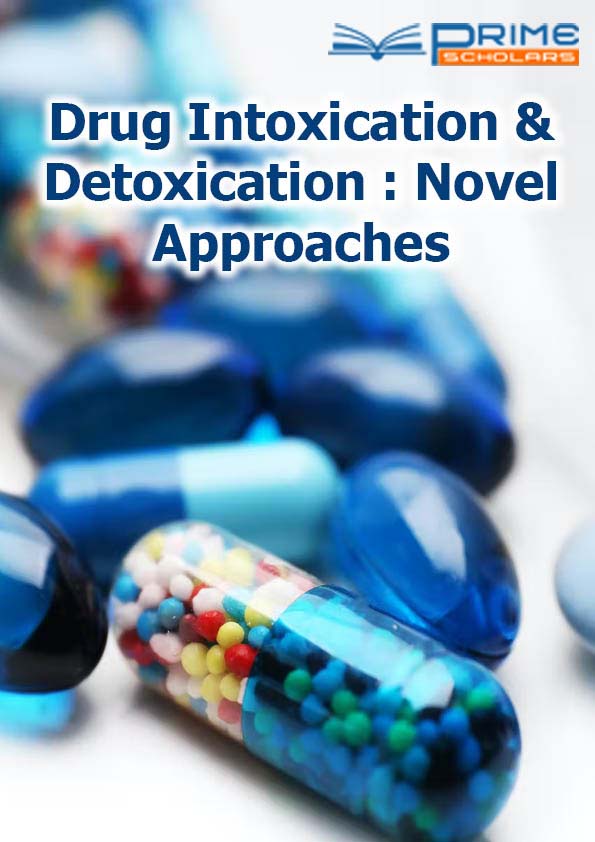Opinion - (2023) Volume 4, Issue 3
Weed and Other Substance Abuse: Suggestions and Guidelines
Syauqi Rafif*
Department of Pharmacology and Clinical Pharmacy, Padjadjaran University, Indonesia
*Correspondence:
Syauqi Rafif,
Department of Pharmacology and Clinical Pharmacy, Padjadjaran University,
Indonesia,
Email:
Received: 30-Aug-2023, Manuscript No. DIDNA-23-17904;
Editor assigned: 01-Sep-2023, Pre QC No. DIDNA-23-17904 (PQ);
Reviewed: 15-Sep-2023, QC No. DIDNA-23-17904;
Revised: 20-Sep-2023, Manuscript No. DIDNA-23-17904 (R);
Published:
27-Sep-2023, DOI: 10.36648/DIDNA 4.3.26
Introduction
Improper handling of controlled substances, including weed
and other drugs, can lead to severe poisoning and even death.
Therefore, a thorough autopsy is essential to understand the
underlying cause of these deaths. This account investigation
examines the quality of commonly mishandled controlled substances,
the techniques used in post-mortem examinations,
the measurement of lethality, the system of poisoning, the effects
of Side effects and available instructions.
Description
The focus is on seven common groups of controlled substances,
namely weed, heroin, amphetamines, cocaine, new psychostimulants
and heroin. These gatherings were linked to a series
of excessive killings. Most substances in these groups have
neurotoxic effects by targeting the focal sensory system “CNS”.
Therefore, strict guidelines are fundamental to minimize the
potential harm caused by these substances. In case of misuse,
prescribers must follow the rules to ensure that the medicine
they recommend complies with the illustrated instructions.
With a better understanding of controlled substance abuse and
its consequences, more convincing approaches can be created
to reduce its prevalence and associated mortality.
Drug and substance abuse refers to the use of substances for
illegal purposes or against clinical advice. This has unfortunate
health consequences and can appear as drug addiction or one
of many other dangerous or damaging behaviours. This behaviour
can lead to drug addiction and various psychological
and social health problems. The consequences of drug addiction
can be extremely serious, including collisions, drunk driving,
aggressive behaviour at home, lewd behaviour, contempt
and abuse of youth, and attempted self-harm body and death,
stroke and exceeding the limit.
As the United Nations Global Report on Drugs and Misconduct
(UNODC) 2022 points out, some 284 million people used drugs
in the previous year, the majority of whom were men between
15 and 64 years old. Seven groups of drugs are considered the
most harmful, including weed, heroin, amphetamines, cocaine,
new psychostimulants and hallucinogens. Of these, cannabis
remains the most consumed drug in the world, with 209 million
users expected by 2020. Other substances followed, with
heroin having 61 million customers last year, amphetamine
with 34 million, cocaine with 21 million and rapture with 20
million customers assessed in 2020.
Improper handling of cannabis and other controlled substances
can lead to death from high toxicity and severe intoxication,
implying the need for a post-mortem examination to determine
the cause of death, investigation of the components of
fatal intoxication and find measurements of these substances
in their natural state. For example. Guidelines on weeds and
other substances are governed by the World Health Association’s
(WHO) Psychotropic and Opioid Control Rules of 1984,
which set out global rules for their control.
Conclusion
This account investigation aims to research the ramifications
and rules surrounding the abuse of weed and other substances.
He will present case reports on substance abuse, discussing
the properties of these substances, post-mortem examination
methods, lethality measurements, components of intoxication
causing mortality and related incidental effects. By providing a
comprehensive understanding of the practice and guidance related
to cannabis and other substance abuse, this survey aims
to contribute important knowledge to the public health sector.
Citation: Rafif S (2023) Weed and Other Substance Abuse: Suggestions and Guidelines. Drug Intox Detox: Novel Approaches. 4:26.
Copyright: © 2023 Rafif S. This is an open-access article distributed under the terms of the Creative Commons Attribution Li-
cense, which permits unrestricted use, distribution, and reproduction in any medium, provided the original author and source
are credited.
